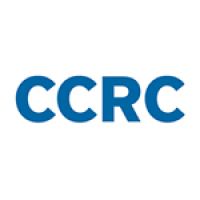By John Fink, Tatiana Velasco, and Davis Jenkins
Last week, the U.S. Department of Education (ED) released—for the first time ever—public transfer community college student outcomes data for colleges and universities across the country. ED’s analysis examined federal financial aid recipients who started higher education at a community college in the fall of 2014 and tracked them for eight years. For community colleges, ED reported transfer-out rates (i.e., community college students who ever enrolled at a four-year institution). For four-year institutions, ED reported eight-year bachelor’s completion rates among fall 2014 community college entrants, counting students who transferred to the four-year institution within four-years of entering the community college. While the ED transfer data are limited to federal financial aid recipients, this still includes a large number of community college entrants—and as beneficiaries of public investment, this is an important cohort of students to track.
So, what are the data telling us about how well colleges and universities are serving community college transfer students? Below, we present dashboards where you can look up transfer student outcomes for an individual college or university or examine institutional outcomes across states, and we discuss three major takeaways from this first look at the new data.
1. There are wide differences in institutional outcomes for transfer students within states.
While we see some differences across states, for both community college and four-year outcomes there is much more variation within states than across states. In the dashboard below, the range of community college transfer-out rates is plotted for each state, and states are sorted by their median transfer-out rate. (The circle size indicates the number of students in the entering cohort at the given college.) You can find a specific college to highlight by using the search box. While some states, like Kansas and New Jersey, have generally higher transfer-out rates, specific colleges in states with lower medians can outshine their state peers. CUNY-Guttman in New York, Irvine Valley College in California, and Dawson Community College in Montana, for example, have some of the highest transfer-out rates nationally. The question this raises is, What are these colleges and others like them doing to achieve exceptional outcomes for their students who are seeking to transfer?
Which Community Colleges Have the Highest Transfer-Out Rates?
2. Some outlier four-year institutions graduate large numbers of transfers at high rates.
The dashboard below shows four-year institution graduation rates for community college transfers (the circle size indicates the number of transferring-in students). By hovering over each circle, you can see the university’s transfer student graduation rate. Many of the universities with higher bachelor’s completion rates for community college transfers are more selective institutions, which generally enroll fewer community college transfers and have more resources for student success efforts. Two such institutions with exceptionally strong outcomes for a large number of community college transfers are Texas A&M University, College Station (85% of its 436 community college transfers completed a bachelor’s) and University of Illinois, Urbana-Champaign (89% of its 207 community college transfers completed a bachelor’s). One important strategy for improving community college transfer outcomes is to widen access for community college transfers into more selective four-year institutions. Another is to strengthen the transfer pathway into more broadly accessible four-year institutions, which serve the majority of community college transfers nationally. George Mason University, which accepts 90% of applicants, is one such outlier in providing a broadly accessible transfer pathways to bachelor’s degrees along with strong outcomes. Eighty-one percent of its 470 community college transfer students completed a bachelor’s degree—8 percentage points above the median for Virginia universities.
Which Universities Have the Highest Bachelor’s Completion Rates for Community College Transfer Students?
3. Other outliers are large, private four-year colleges that graduate transfers at low rates.
Some of the universities with the lowest completion rates for the largest numbers of community college transfer students are large private for-profit and non-profit colleges that mainly offer their programs online. These institutions, which include the University of Phoenix (14% completion, 2,135 community college transfers), Ashford University (10% completion, 725 community college transfers), Liberty University (35% completion, 504 community college transfers), and Southern New Hampshire University (19%, 882 community college transfers), serve large numbers of low-income transfer students receiving federal financial aid. Community colleges should be looking at the bachelor’s completion rates among their university transfer partners and making it clear to students which transfer destinations have better or worse track records for supporting community college transfer students through to a bachelor’s degree.
Private Four-Year Institution Outliers: Community College Transfer Bachelor’s Completion Rates

Stay tuned: More comprehensive transfer data and lessons learned from top-performing partnerships
The new transfer data were released at a summit of leaders across postsecondary sectors from 10 states, organized by ED’s Raise the Bar initiative. CCRC and our partners at the Aspen Institute helped organize and facilitate the event, sharing preliminary findings from a forthcoming update to our Tracking Transfer report expanding on the transfer outcomes ED released.
In our updated Tracking Transfer report—planned for early 2024—CCRC, together with the Aspen Institute’s College Excellence Program, will present new national and state-by-state results based on National Student Clearinghouse data. The analysis will include all community college transfers, not only federal financial aid recipients, disaggregated by race/ethnicity, neighborhood income, gender, and age for both community colleges and four-year institutions. Our preliminary results show stark equity gaps in transfer student outcomes for students of color, low-income students, men, and older students. However, as with the ED data, we find substantial differences in institutional performance for transfer students from minoritized groups. In a companion study, which will be published later next year, CCRC and Aspen are conducting field research on the practices of transfer partnerships that together have achieved exceptional bachelor’s completion rates for Black, Hispanic, and low-income students who start at a community college. Stay tuned for both of these publications in 2024 to shed further light on how states and colleges can tackle longstanding inequities in transfer and deliver stronger outcomes for community college students seeking bachelor’s degrees.





